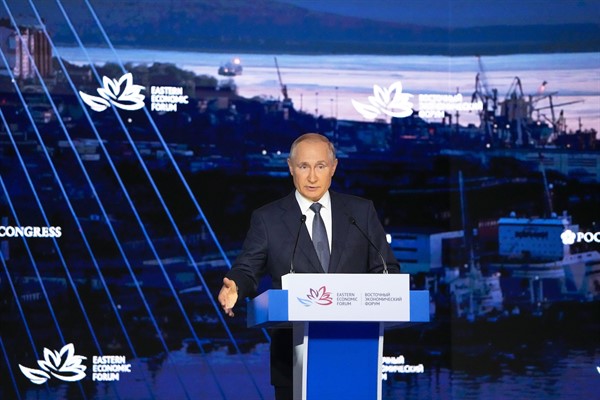In early September, Russian President Vladimir Putin appeared at the Eastern Economic Forum in Vladivostok, a port city on the Pacific coast, to issue a call to action. Russia, he said, needed a new generation of pioneers to revive the country’s eastern frontier. “The development of the Far Eastern region is of huge importance to Russia,” Putin said, urging the assembled businesspeople to invest in the region. No less than “the development of our country not [just] for decades, but for centuries to come” depended on it, he added.
Nearly 30 years after the collapse of the Soviet Union, Russia’s Far East is a region still struggling to reach its unique potential. Stretching over nearly 2.7 million square miles, the Far East is larger than most countries and accounts for roughly 40 percent of Russian territory. It enjoys an abundance of natural resources, including oil, natural gas, coal, timber, seafood and a wide range of valuable minerals. Historically, its southern territories have been a center of agricultural activity, and today they boast more than 2 million hectares of cultivated farmland suitable for growing wheat, rice, corn, soybeans and barley.
But perhaps the Far East’s greatest asset is its location. Though far away from Moscow, the region is close to lucrative markets like China, Japan and South Korea. With 29 seaports along its Pacific coast and the world’s longest railway network, the region also serves as an important transport corridor between Europe and Asia. Russian officials argue that the region’s transit potential is only set to increase in the coming decades as melting ice in the Arctic Ocean clears the way for maritime trade along the Northern Sea Route, which used to be inaccessible for much of the year.

